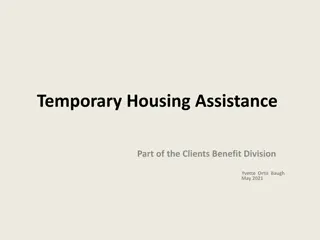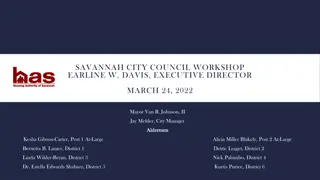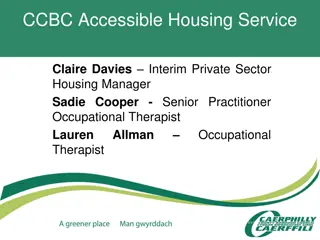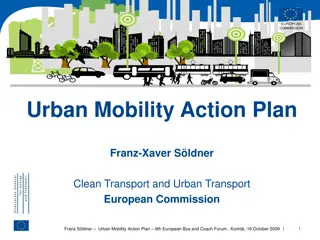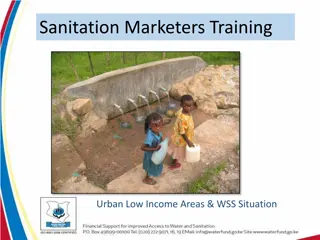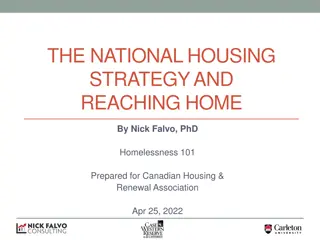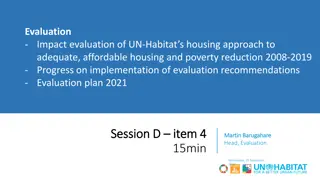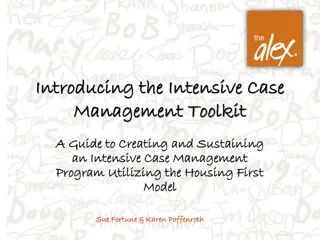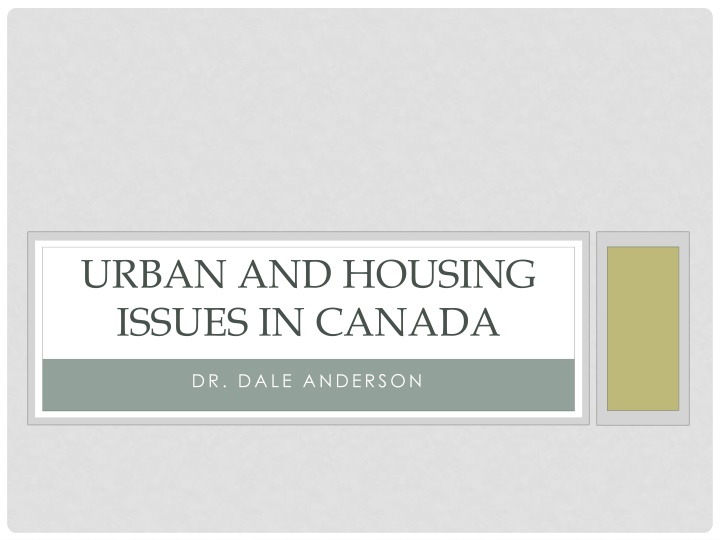
Urban and Housing Issues in Canada with Dr. Dale Anderson
Explore the contextual, historical, and governmental aspects of urbanism and housing in Canada through a presentation on the country's shared responsibilities, key urban issues, housing concepts, and policies, presented by Dr. Dale Anderson.
Download Presentation

Please find below an Image/Link to download the presentation.
The content on the website is provided AS IS for your information and personal use only. It may not be sold, licensed, or shared on other websites without obtaining consent from the author. If you encounter any issues during the download, it is possible that the publisher has removed the file from their server.
You are allowed to download the files provided on this website for personal or commercial use, subject to the condition that they are used lawfully. All files are the property of their respective owners.
The content on the website is provided AS IS for your information and personal use only. It may not be sold, licensed, or shared on other websites without obtaining consent from the author.
E N D
Presentation Transcript
URBAN AND HOUSING ISSUES IN CANADA DR. DALE ANDERSON
PRESENTATION OVERVIEW Canada: Context Government and Shared Responsibilities Urbanism and Key Urban Issues General Housing Concepts Housing in British Columbia Housing Policy in B.C.
Late 15thcentury, British and French colonies on Atlantic coast Eventually, United Kingdom gained territories British North American Act of 1867 three colonies formed Dominion of Canada More colonies added to the self- governing dominion 1931 Britain granted Canada full independence 1982 last ties dissolved Aboriginal peoples were living in these colonies when Canada formed still present today CONTEXT: HISTORY
10 provinces 3 territories 10 million square km (second largest country by area) 35 million people Border shared with United States (and France) Vast majority of population live within 200 km of USA Highly multicultural, especially major metropolitan areas CANADA TODAY
Democratic constitutional monarchy Head of State: Queen Elizabeth II Head of Government: Elected Prime Minister Federal government three branches Executive Legislative Judicial Federal, and provincial /territorial governments share responsibilities Queen has representatives in Canada GOVERNMENT
SHARED RESPONSIBILITIES Federal Government Areas of Responsibility National defence Foreign affairs Employment insurance Banking Federal taxes Post office Fisheries Shipping, railways, telephones and pipelines Aboriginal lands and rights criminal law Areas of law listed in the Constitution Act, 1867 Generally affect the whole country Sources of Revenue: Income tax, sales tax, corporate tax
SHARED RESPONSIBILITIES Provincial Government Areas of Responsibility Education Health care Some natural resources Road regulations Hospitals Federal Prisons Marriage Property and civil rights Agriculture and immigration shared with federal Areas of law listed in the Constitution Act, 1867 Generally affect individual provinces Sources of Revenue: Income tax, sales tax, corporate taxes
SHARED RESPONSIBILITIES Municipal Government Areas of Responsibility Creatures of the provinces Powers as granted by province Property taxes Emergency Services (police, fire, ambulance) Local roads and infrastructure Water, sewer Community centres, libraries, swimming pools = typically
SHARED RESPONSIBILITIES First Nations Areas of Responsibility Changing status Band councils Sources of Revenue: varies primarily federal government Changing On reserve = federal responsibility Off reserve = provincial responsibility
URBANISM TODAY About 80% urban 10 million in three metropolitan areas: Toronto - 5M Montreal - 3.5M Vancouver - 2M
OTHER MAJOR URBAN CENTRES Rank 1 2 3 4 5 6 7 8 9 10 11 12 13 14 15 Metro Area Pop 2011 Toronto, Ontario Montreal, Quebec Vancouver, British Columbia Ottawa-Gatineau, Ontario and Quebec Calgary, Alberta Edmonton, Alberta Quebec City, Quebec Winnipeg, Manitoba Hamilton/Burlington, Ontario Kitchener, Cambridge, Waterloo, Ontario London, Ontario Saint Catherine s Niagara, Ontario Halifax, Nova Scotia Oshawa , Ontario Victoria, British Columbia TOTAL 5,583,064 3,824,221 2,313,328 1,236,324 1,214,839 1,159,869 765,706 730,018 721,053 477,160 474,786 392,184 390,328 356,177 344,615 19,983,672
URBAN ISSUES Major Issues Paradox Urban sprawl Municipal infrastructure: maintaining, renewing and costs of doing so Housing: lack, affordability Public transit and transportation Climate change Environmental quality Immigration Very high per capita income High ranking on Human Development Index High results for education, government transparency, civil liberties, quality of life, economic freedom
HOUSING IN CANADA Features Issues Affordability Rental: Lack of new, quality of stock Past development patterns and reliance on cars Homeownership vs rental patterns changing Energy and water efficiency and sustainability compact communities Market: ownership or rental Social housing rental High homeownership rates historically (67-70%) Homeownership increasing over past decades* Major changes by federal government after WWII
Partnering in social housing Funding e.g., early stages of affordable housing project Financial assistance such as First-time Home Buyers Tax Credit or Home Buyers Plan (use funds from retirement savings) Providing mortgage insurance (<20% down payment) Research on the housing market via Canada Mortgage and Housing Corporation Exemptions from capital gains tax for principal residence SHARED RESPONSIBILITY: FEDERAL Affordability Examples
Regulation of real estate development and marketing Home warranty insurance Landlord-tenant relations Overseeing land use planning and development finance Funding public transit Funding social housing programs and projects Providing targeted rent supplements Homeowner support e.g., property-tax support, property tax deferment programs, first-time home buyers grant Home adaptations for independence Seniors Home Renovation Tax Credit Building code for B.C. example: options for secondary suites Developing uniform technical standards that simplify building code compliance SHARED RESPONSIBILITY: PROVINCE Affordability Examples
Regional growth strategies and community and neighbourhood plans support affordable housing Housing friendly regulatory environment (e.g., allowing secondary suites, density, good transit corridors, etc.) Prezoning land Property tax incentives for affordable housing Streamlining development approval processes Reducing permitting fees and development cost charges SHARED RESPONSIBILITY: MUNICIPAL Affordability Examples
HOUSING CONCEPTS Core Housing Need Adequate (repairs) Suitable (size) Affordable (<30% income)
HOUSING IN B.C. Key Features Issues Private market provides most housing (95%) Social/subsidized housing (5%) Ownership and rental Single detached housing predominates Affordability becoming increasing concern Homelessness Large urban/industrial centres Supply, affordability, quality Sustainability features of building code
HOUSING AFFORDABILITY IN BC City of Vancouver City of Victoria Single detached home ~ $750,000 CDN Single detached home ~ $1 million CDN Average household income ~ $38,000 Average household income ~ $57,000 Renters ~60% Renters: ~ 52%
HOUSING POLICY IN B.C. Housing Matters B.C. Provincial housing policy document Latest update 2014 Main policy document Implementation: BC Housing and partners Philosophy of partnerships housingmattersbc.ca Rent Control Rent control features: Increase of inflation + 2% Deregulation between tenancies Above-guideline increases possible Manufactured home parks slight differences
HOUSING CONTINUUM/ HOUSING SPECTRUM TEMPORARY --------------------------------- PERMANENT Rental Assistance in Emergency Shelters Transitional Housing Non-market Rental Ownership Strata Supported Housing Secondary Rental Ownership Non- (Social Housing) (Condos, Suites) Market Rental Private Market Assisted Living (Purpose Built) Strata ----------------------- RENTAL ----------------------- OWNED MORE GOVERNMENT SUPPORT LESS
HOUSING POLICY IN B.C. Strategy 1 Goals Stable housing with integrated supports for those facing homelessness Increased housing supply for the homeless Homeless have improved access, choice and stability in social housing and private rental market
HOUSING POLICY IN B.C. Strategy 2 Goals B.C. s most vulnerable citizens receive priority for assistance Frail seniors, mental illness, physical disability, drug/alcohol addictions, women and children fleeing violence, homeless and at risk of homelessness Manage social housing stock to ensure its stability and maximum potential
HOUSING POLICY IN B.C. Strategy 3 Goals Aboriginal housing need is addressed through a strong Aboriginal housing sector Off-reserve housing Aboriginals overrepresented in homelessness, core housing need A strong, self-reliant Aboriginal housing sector Through: Devolution of responsibility
HOUSING POLICY IN B.C. Strategy 4 Goals Low- to moderate- income households have improved access to affordable and stable rental housing Increased supply, choice and improved accessibility of rental housing for low/moderate income households and vulnerable populations Streamlined systems for landlords and tenants
HOUSING POLICY IN B.C. Strategy 5 Goals Homeownership continues to be a sound option for British Columbians Effective systems that support consumer confidence Improved home inspector licensing
HOUSING POLICY IN B.C. Strategy 6 Goals B.C. s governance framework for housing, building and technical equipment safety is clear, effective and balanced Safety risks are identified and managed properly Safety, economic and social interests are recognized, balanced and managed appropriately
HOUSING FIRST STRATEGY Housing First Strategy At Home/Chez Soi Study Shift in provision of housing to needy populations Formerly: stabilize life, then eligible for housing Housing First: No barriers to housing, provide supports Housing First effective strategy $10 investment in housing services average savings of $9.60 for high needs participants and $3.42 for moderate needs
DALE.ANDERSON@GOV.BC.CA THANK YOU AND QUESTIONS
PROVINCIAL PLAYERS Example BC Housing HPO Real Estate Sector Builders Business New home warranty program






